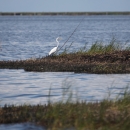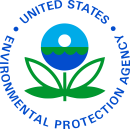The U.S. Fish and Wildlife Service (Service) has responsibility for conserving endangered and threatened species, migratory birds, certain fishes, other natural resources (including national wildlife refuges) and the ecosystem services they provide, including recreational opportunities. Unfortunately, oil spills and hazardous substance releases threaten millions of miles of coastline, river systems, lakes, and terrestrial habitat and the species that depend on these habitats.
The challenge of managing natural resources that may be affected by oil spills and hazardous substance releases in the United States is increasing in complexity and magnitude. Many people are familiar with the large, catastrophic oil spills of national significance, such as the 1989 Exxon Valdez spill and the 2010 Deepwater Horizon spill. However, the U.S. Environmental Protection Agency (EPA) estimates that 70 oil spills occur every day in the country on a smaller basis. In addition, the federal government receives reports of 12 hazardous substance releases per day, some of which are so large that they threaten human health or the environment, and are eventually deemed as Superfund sites. In other cases, these releases occurred long ago (legacy contamination), with little or no effort to remediate them.
When fish, wildlife, and other natural resources are harmed by oil or other hazardous substances, our Environmental Response and Restoration specialists work with other response agencies to minimize negative impacts to natural resources from the spill and associated response activities. We support the lead federal response agencies – the EPA for inland spills and the U.S. Coast Guard for coastal spills – by providing guidance regarding wildlife protection during spill response and remediation activities.
During active spills or releases, Environmental Response and Restoration specialists use a variety of methods to deter wildlife, especially birds, from areas contaminated by oil or a hazardous substance. We also assist with search and rescue of oiled wildlife, so the animals can be cleaned and rehabilitated, when possible. In addition, their knowledge of local resources and sensitive ecological areas is invaluable to the EPA and U.S. Coast Guard, which helps inform and prioritize response activities and spill countermeasures. Our expertise is particularly important when wetlands, refuge lands, endangered and threatened species, migratory birds, or the habitat supporting these species are potentially or physically impacted.
While we are always ready to provide support during an emergency, we try to focus the majority of our response work on pre-planning and preparedness. We emphasize early (contingency) planning and cooperation at the local, regional, and national level to minimize the injury to fish, wildlife, and sensitive environments from oil spills or hazardous substance releases, clean-up, and remedial actions. Through our pre-planning, we conduct ecological risk assessments that provide information regarding which species and habitats are at risk. Then we design best management practices to reduce the risk of a spill, when possible, and to protect species and habitats during a spill. We share this information with our partners in the response community, which helps minimize uncertainty during a spill. We also complete specialized training and participate in spill response exercises with our partners to build and maintain relationships.
The Service is a valued trustee and partner in minimizing the impacts of oil spills and hazardous substance releases to natural resources and the services they provide.





